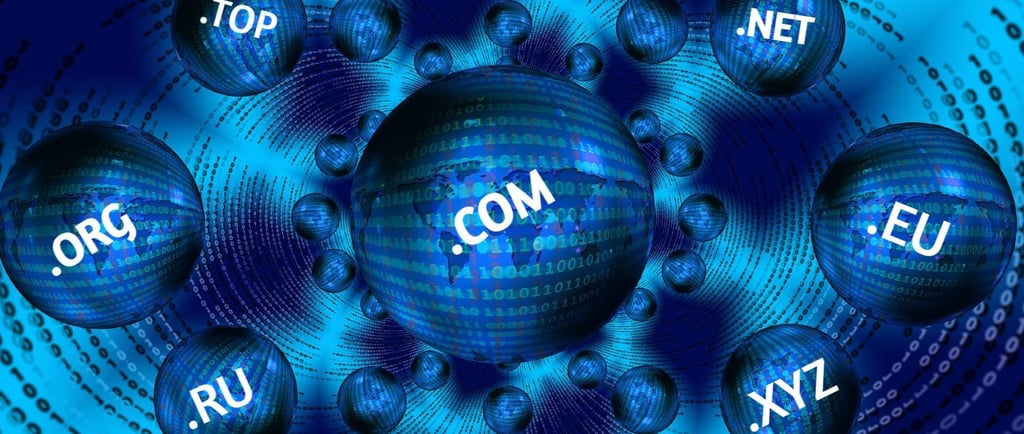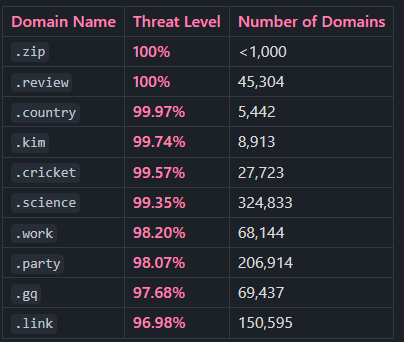The Most Dangerous Domains on the Web
BLOGS


The internet is an expansive world of opportunities, knowledge, and connections. However, lurking beneath its surface are dangers hidden in plain sight: malicious domains. These domains, often exploited by hackers and cybercriminals, serve as breeding grounds for phishing attacks, malware distribution, and scams. Today, we’ll dive into the most dangerous domains as highlighted in the chart, exploring why they pose significant threats and how you can protect yourself.
Understanding the Threat Levels
Each domain extension—or TLD (Top-Level Domain)—represents a part of the internet. Some are legitimate spaces for businesses or hobbies, while others become hotbeds for cybercrime due to lax regulation or low cost. Here’s a breakdown of the most notorious domains and their threat levels:


Why Are These Domains So Dangerous?
Lack of Regulation
Many of these domains, like .zip and .review, have minimal oversight, making them attractive for hackers. Cheap to purchase and easy to set up, they become prime platforms for malicious activities.Phishing Schemes
Cybercriminals exploit domains like .zip and .link to mimic legitimate services, sending fake emails or links that trick users into revealing sensitive information.Malware Distribution
Extensions such as .science and .country are notorious for hosting malware downloads, infecting unsuspecting users’ devices the moment they click a link.Targeting Trust
Some domains like .review leverage their "trustworthy" appearance to deceive users, luring them into scams or fraudulent services.Keyword Exploitation
Hackers often target niche audiences by using domains like .kim or .cricket to bait specific communities, creating a false sense of security.
How to Stay Safe Online
Be Cautious with Unknown Links
Always hover over a link before clicking to verify its true destination. If the domain looks suspicious or unfamiliar, avoid it.Use a URL Scanner
Tools like VirusTotal or urlscan.io can help detect if a link or website is malicious before you interact with it.Enable Advanced Security Features
Modern browsers and email services often flag suspicious domains. Make sure these features are turned on.Invest in a VPN and Anti-Malware Software
A Virtual Private Network (VPN) can shield your IP address from malicious actors, while anti-malware software provides an extra layer of defense.Educate Yourself and Your Team
Awareness is key. Familiarize yourself with the TLDs most often exploited and share this knowledge with friends, family, or colleagues.
Why This Matters
In the era of digital convenience, it’s easy to overlook the hidden dangers of the web. Cybercriminals capitalize on our trust and curiosity, using these domains to wreak havoc. By understanding the risks associated with these TLDs, you take the first step toward safeguarding yourself and your data.
The web is a double-edged sword—powerful but perilous. Stay informed, stay safe, and always think twice before you click.
